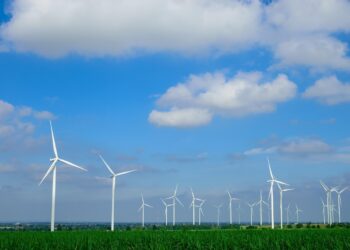Warming Fields: The Impact of Climate Change on Global Agriculture
As the planet warms, the effects of climate change on global agriculture are becoming increasingly undeniable and complex. This transformation poses significant challenges to food production, impacting food security and farmer livelihoods around the world. In this comprehensive analysis, we explore how rising temperatures, altered rainfall patterns, and increased frequency of extreme weather events are reshaping the agricultural landscape, and what strategies might help mitigate these impacts.
Understanding Climate Change and Agriculture
Climate change refers to long-term shifts in temperatures and weather patterns. These changes are primarily caused by human activities, especially the burning of fossil fuels like coal, oil, and gas, which increases the concentration of greenhouse gases in the atmosphere. Agriculture itself is both a victim and a contributor to climate change, producing significant amounts of greenhouse gases through conventional farming practices.
The Effects of Rising Temperatures on Crop Production
Increasing temperatures can have several adverse effects on agriculture. Heat can stress plants, reduce growth rates, and lower yields. For instance, staple crops such as wheat, rice, and maize are particularly sensitive to temperature changes. Studies have shown that each degree Celsius increase in global temperatures could potentially decrease global yields of these crops by 6-7%.
Altered Phenology and Quality Reduction
Warmer climates also lead to altered growing seasons and phenology, which is the timing of natural events like flowering and fruiting. This can lead to mismatches between crop needs and environmental conditions, harming crop production. Additionally, quality parameters such as size, appearance, and nutritional content can also be degraded by higher temperatures.
Impact of Changing Rainfall Patterns
Climate change is causing shifts in rainfall patterns, which affects water availability. Certain regions experience more intense and frequent droughts, while others may face excessive rainfall, leading to floods. Both scenarios can be devastating for farmers, disrupting crop schedules and damaging crops.
Droughts and Water Scarcity
In areas where droughts are becoming more common, there is not enough water available for irrigation. Prolonged dry spells can deplete soil moisture and make land unsuitable for agriculture, exacerbating food scarcity issues.
Floods and Soil Erosion
Conversely, excessive rainfall can lead to floods that wash away fertile topsoil and sometimes even destroy entire fields of crops. This not only leads to immediate agricultural losses but also to longer-term soil degradation.
Exacerbation of Pest and Disease Incidence
Climate change also increases the prevalence and distribution of pests and diseases. Warmer temperatures can expand the habitat range of many harmful pests and pathogens, exposing crops to new threats and reducing yield and quality.
Effect on Livestock
It’s not just crop production that is affected; livestock are also at risk. Heat stress can decrease animal productivity and reproduction rates, impacting the yield of meat, milk, and eggs, and potentially leading to increased incidence of disease within livestock populations.
Strategies for Mitigation and Adaptation
While the challenges are daunting, there are various strategies that can help mitigate the impact of climate change on agriculture and secure global food systems.
Adopting Climate-Resilient Crop Varieties
One effective approach is breeding and using crop varieties that are more resilient to environmental stresses, such as drought or heat. This can help maintain or even increase crop yields under changing climatic conditions.
Improved Agricultural Practices
Implementing sustainable agricultural practices, like no-till farming, proper water management, and organic farming, can improve soil health, increase water efficiency, and reduce the carbon footprint of farming activities.
Technological Innovations
Technological solutions such as precision agriculture, which uses GPS tracking systems and IoT technology, can optimize the use of resources like water and fertilizers, improving crop yields and reducing environmental impact.
Conclusion: A Call for Global Action
The impact of climate change on global agriculture necessitates a unified global response. Stakeholders at all levels, including governments, corporations, and individuals, must cooperate to foster policies that support resilient agricultural practices and contribute to sustainable food security. Investing in research, expanding the use of innovative technologies, and promoting sustainable practices are critical steps toward adapting to a warmer world and safeguarding our agricultural future.
Addressing climate change is a daunting challenge, but with concerted efforts, we can ensure that our agricultural systems are resilient, sustainable, and able to feed the growing global population despite the warming fields.
This comprehensive discussion not only highlights the challenges but also opens the door for continued dialogue on how best to adapt and mitigate the effects of climate change on agriculture.










